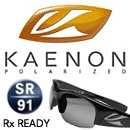
|
|
|
Scuttlebutt News: Steve Benjamin: High Performance Rule
SPOOKIE proved to be a highly technical 40-foot keelboat being handled like a dinghy - correction - a skiff. Its high performance rewarded expert crew work with significant penalties for mishaps. Afterwards at the dock, "Benj" shared his comments on the following topics: The idea first came from Stan Honey and in some ways an outgrowth of the grand prix working party which was trying back in 2007 or so to bring together some of the vested groups to get a grand prix rule working. But the effort kind of blew up with everyone going away angry. But after I was appointed the chairman of the New York Yacht Club handicap rules committee at the end of 2010, the club was motivated to get the wheels turning again. It's a published rule which allows people to immediately see the impact of a change. It is so much easier to operate under this system when tweaking the boat's parameters. You don't have to run any trials, or submit measurement changes and money to learn how these changes impact the rating. With HPR we can operate off a spreadsheet and instantly see the result of the changes. For SPOOKIE, we had one parameter- the tack point of our spinnaker - that was slightly over maximum. So we were able to sit down with an Excel spreadsheet of the rule and tinker with it to determine exactly the extent it was over maximum and the options to correct it. There is a contingent of people that prefer the transparency. We don't want to be held to the subjective hull factors; we want to know exactly what it is rated and why and how you get to that rating. The HPR is so simple; it is down to basically 12 factors now. HPR could be viewed as a brand of boat, a high performance planning type boat between 26 and 72 feet. But boats don't necessarily need to be a planning boat like SPOOKIE. We've been working really hard with HPR to get the rule to a point where a range of boat types can be competitive. For example, the Ker 40 Catapult, which is considered an IRC type boat, had a dilemma at Key West as there was no IRC class for that size of boat. They were planning on racing in PHRF, but they are a grand prix-type team and we swayed them to race HPR. We are having some great races. HPR was originally funded by the NYYC but the ownership has since been transferred to the ORA (Offshore Racing Association). Then Dan Nowlan, who is the Offshore Director at US Sailing, had the idea of having a world central processor of certificates. Dan suggested the ORC because they were set-up with the software and the website portal that was already providing this service. And the ORC agreed, so pretty soon, perhaps within a month, every HPR certificate that comes out will be issued by the ORC world central processor. All countries will feed into that. What's notable is that this is the first time in the history of the world that there was one central authority worldwide issuing certificates. This is extremely positive. What we're thinking is if the idea catches on, which seems to be happening, the design offices and owners will start commissioning these types of boats. And there is bound to be some evolution; boats will continue to improve. But we know what we have right now, which is a fast boat that is really fun to sail and its rated according to a published, fair rule that is completely transparent. Rolex Big Boat Series in San Francisco used HPR in 2012 and they will use it again this year. The Australians were one of the first international groups to come to us and say they want to use it. The 52 foot class may try the rule on an experimental basis. They are currently using IRC but the class has a narrow rating band and the teams are bouncing against the high limit of the band, and with IRC they have to go through a lot of processes to revise their certificates. With HPR it would allow them to fiddle with it themselves. It would be so much easier. We think IRC is a really great rule, and we don't want to take anything away from it. We want the HPR boats to compete within IRC in a larger fleet format. For example in the Marblehead-Halifax Race there should be an HPR class and they still will be eligible for the fleet trophies. So that is a model for how it can work pretty well. What we have to make sure of is that the HPR type-form is good, and that the rule algorithm is good, because after all it is just an equation. And we have worked really hard through four rule versions. We are now on Version 4D, meaning we have had four iterations of V4 to get it to the point where we are today. The more the rule is used the more scrutiny that it will come under so we have to have a process to improve the rule yet keep it stable. Rule changes are often good for someone and not as good for someone else. We hope where we are now is it at a point where it can be stabilized and locked in for awhile, maybe three years. In the history of design rules, this would be a break through.   January 25, 2013 back to top |







|


